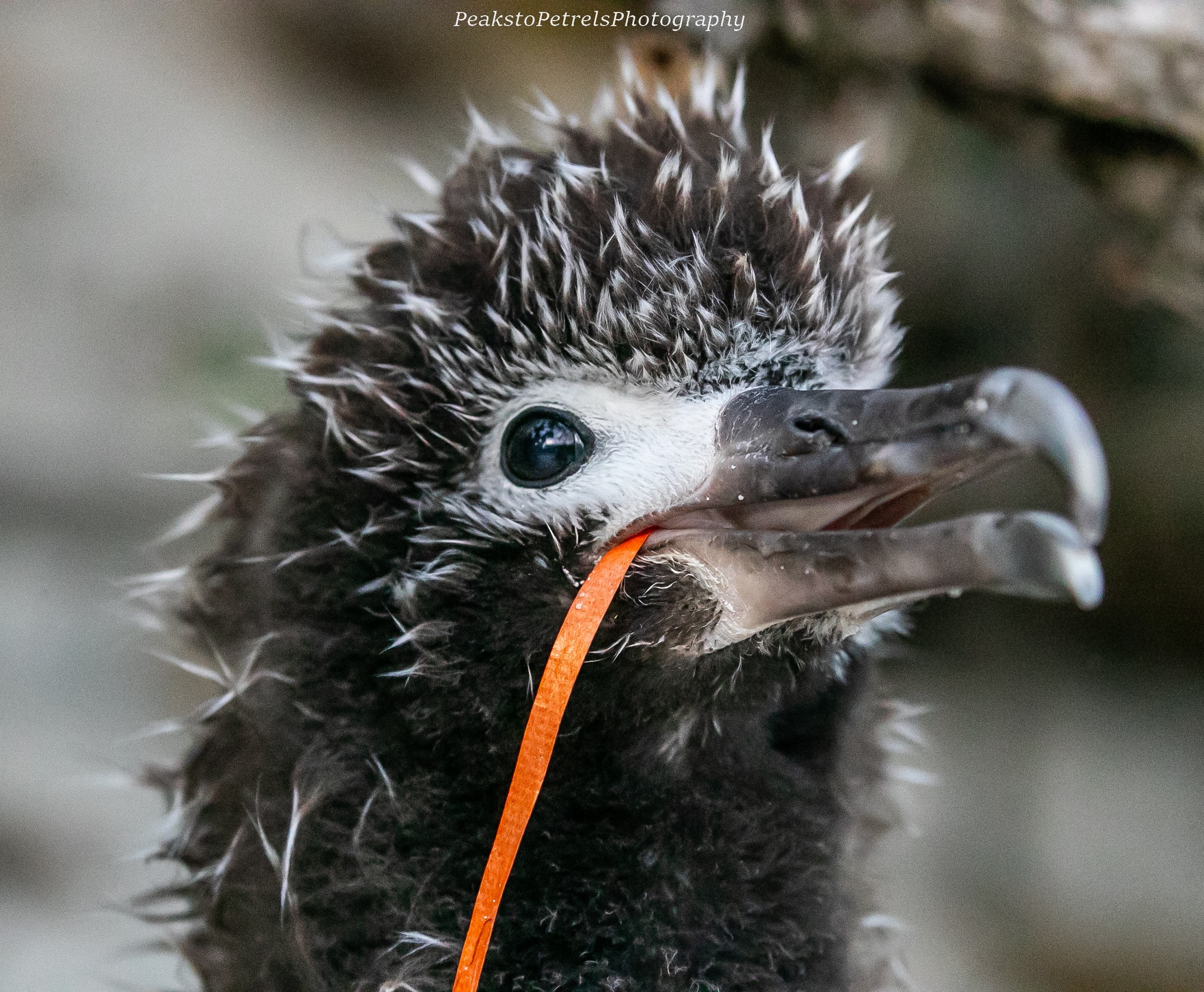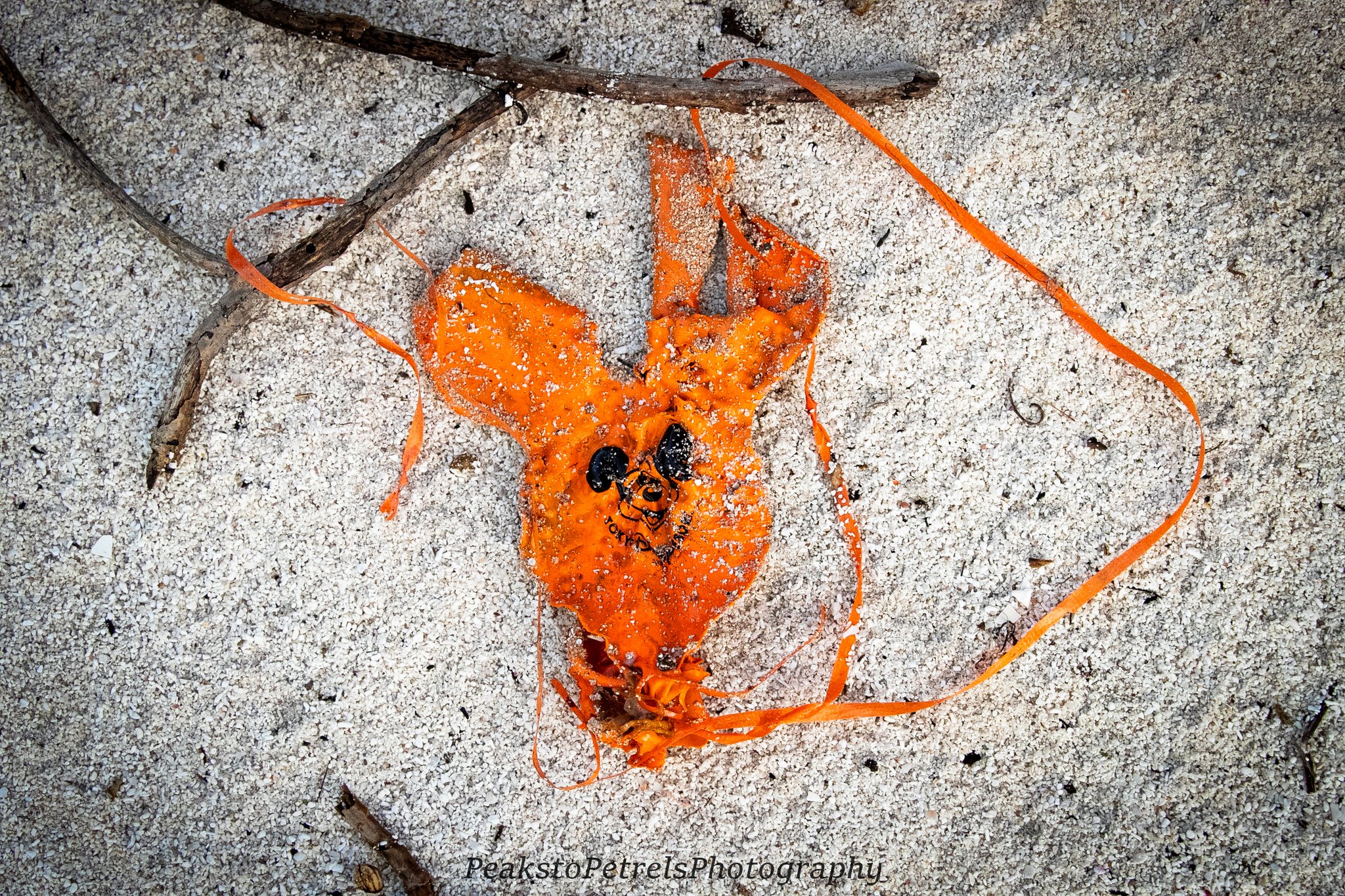 A Laysan Albatross with a protruding plastic ribbon on Kure Atoll, photograph by Isabelle Beaudoin
A Laysan Albatross with a protruding plastic ribbon on Kure Atoll, photograph by Isabelle Beaudoin
Isabelle Beaudoin, a seabird biologist currently on Kure Atoll in the Northwestern Hawaiian Islands, writes a weekly post on her observations and thoughts for the Facebook page of the Kure Atoll Conservancy. In her latest contribution she narrates how she saved a Laysan albatross Phoebastria imuutabilis chick from a likely death, as given in full below.
”On a sombre but resolved note, yesterday I came across a mōlī (Laysan albatross) chick on the camp beach path that had a bright orange ribbon, about 4’ [1.2 m] long, trailing out of its bill. The chick was alert, alive and well, but I knew in a heartbeat what that ribbon was attached to at its other end. I very quickly snapped a few documenting photographs, before gently tugging on the ribbon, hoping against hope that what it was attached to was not lodged in the digestive tract. To my great relief, I felt some give, and on the second tug, out slithered from the chick’s bill a bright orange rubber balloon, about 4 inches [10 cm] long. The ugly thing now lay on the sand next to the chick, with its long trailing ribbon, at the end of which a loop still existed where it had no doubt been tied to a child’s wrist. The orange balloon was Mickey-Mouse shaped, and still had black writing that read ‘Tokyo Disney Resort’, along with a black Mickey-Mouse icon. I paused to remember the moment, disgusted. I was very glad I’d been able to remove this piece of garbage from the albatross, and that the balloon had not made its way further down into the digestive tract, blocking it."

The Mickey Mouse balloon and attached ribbon from the Tokyo Disney Resort after removal, photograph by Isabelle Beaudoin
The waters surrounding Japan fall within the at-sea range of the Laysan Albatross but it is impossible to guess quite how far the ballon travelled from the Tokyo Disney Resort before being mistaken as a food item by one of the chick’s parents. However, it is a reminder of the widespread (and international) problem of plastic pollution and the regular ingestion of balloons and other plastic items by ACAP-listed albatrosses and petrels. In 2023 “Plastic Pollution” was ACAP‘s theme for World Albatross Day on 19 June. Sad to see the problem still persists.
John Cooper, Emeritus Information Officer, Agreement on the Conservation of Albatrosses and Petrels. 03 April 2025

 English
English  Français
Français  Español
Español